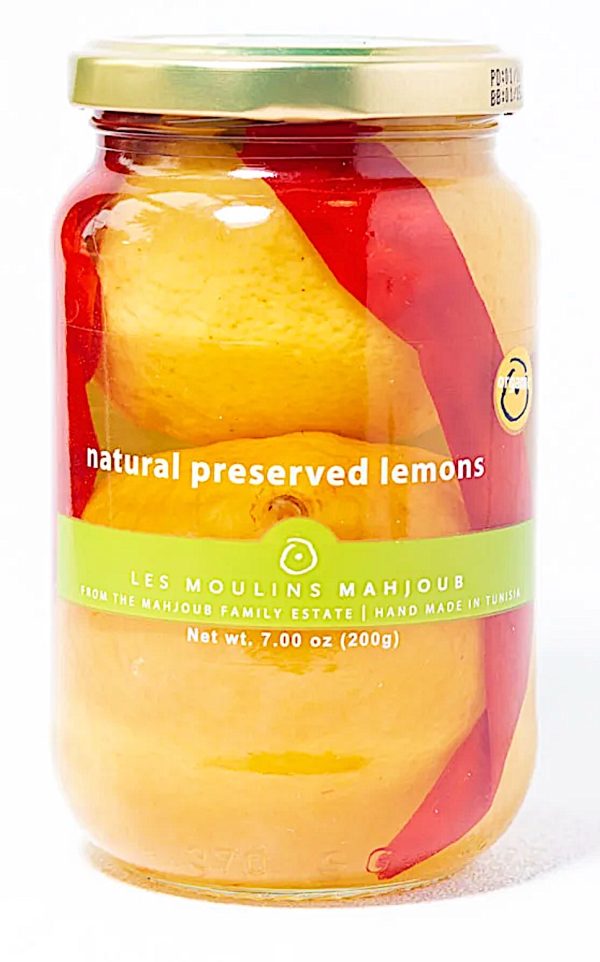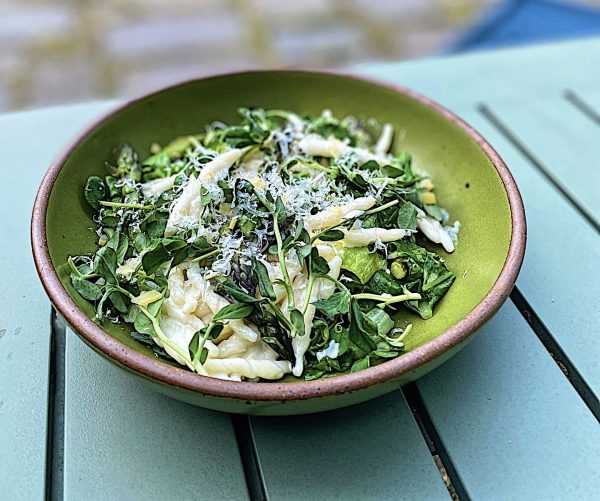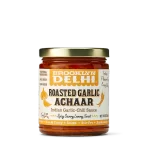5 Ways to Enjoy: Tunisian Preserved Lemons
5 Ways to Enjoy: Tunisian Preserved Lemons
What are preserved lemons?
At the risk of getting a (well-deserved) eye-roll, they are exactly what they sound like—lemons that have been preserved. This salt-cured citrus is commonly used in North African, Middle Eastern, and South Asian cuisines. Originally, they would have been preserved to last well beyond their season (as all preserved things are); now they’re a year-round staple. Preserved lemons can add an umami-laden depth of flavor to dishes that just can’t be matched by a squeeze of fresh lemon.
What’s special about Tunisian Preserved Lemons?
The preserved lemons we choose to use and sell at Zingerman’s come from our friends, the Mahjoub family. Tunisian lemons are known for their intensity and concentrated citrus flavor. Like all Les Moulins Mahjoub products, their preserved lemons are organic, produced using traditional farming methods, and processed with no artificial ingredients or additives. As the Mahjoubs say,
We haven’t invented anything new. The culinary traditions of the southern Mediterranean, particularly those of the Berber culture, are alive and well. They are nourished by the fundamental elements: the sun’s fire, and water, often with the addition of a little salt from the sea. But there’s one more essential element: time. For these natural transformations to take place, time is key.
Each jar contains two or three whole Tunisian lemons and a mild red pepper to add an additional layer of flavor. Recipes will sometimes call for just the rind of a preserved lemon, but the entire lemon is edible and can be minced, sliced, or even puréed. A little goes a long way, so that jar could be used to make a dozen (or more) dishes and it will last for months in the fridge.
5 of Our Favorite Ways to Use Tunisian Preserved Lemons
It actually might be easier to come up with a list of where not to use preserved lemons! As Paul Swaney, HR Generalist at Zingerman’s Department for People says,
I learned from Zingerman’s Mail Order that you can improve any dish by using preserved lemons. I have taken that to heart and it has proven to be true. I add preserved lemons to pasta sauces, soups, and stews. I utilize preserved lemons on pizza and as a condiment for grilled sausages. They are great in salad dressings and omelets. In short, preserved lemons have changed my cooking and added new complexity to every dish that I prepare at home.
Come to think of it, maybe there aren’t any dishes that wouldn’t benefit from a little preserved lemon. Nevertheless, here are five more ideas to get you going with your jar:
- Coupled with chicken. A Moroccan chicken tagine might be the most popular example, but preserved lemons go well with simple braised or roasted chicken, and puréed, they can be used as a marinade.
- Added to pasta, legumes, or rice dishes. Preserved lemons and chickpeas are a classic duo. As are preserved lemons and lentils. The Mahjoubs have a recipe for a salad with preserved lemon, lentils, and their hand-rolled couscous. Connor Valone, Zingerman’s Deli specialty foods meat buyer and supervisor, likes to add a bit of diced preserved lemon to red lentil soup.
- Paired with seafood. You’ll often find preserved lemons paired with scallops or shrimp, but they’ll happily play with whatever seafood you’re in the mood for. Brad Hedeman, who does marketing and product selection for Zingerman’s Mail Order says, “Slip a few slices of preserved lemon into a whole fish before baking, then put a couple more slices on top before serving.” Zingerman’s co-founder Ari Weinzweig likes to make Spicy Tunisian Spaghetti with whatever seafood he has on hand—shrimp, squid, scallops, octopus, various types of fresh fish, even tinned sardines. For a lower-lift recipe, add a few thin slices to your next tuna sandwich.
- Don’t forget about the brine! Swaney’s found that the preserved lemon brine works beautifully as a substitute for olive juice in a dirty martini. Or add a splash to a Bloody Mary. You can also use the brine in a vinaigrette, in place of some of the vinegar or lemon juice.
- Used in desserts! For a salty-sweet pairing, drizzle thick slices of ripe watermelon with a preserved lemon vinaigrette. Preserved lemons can be used in ice cream, cookies, or even cake—you’ll find food journalist Claire Saffitz’s Preserved Lemon Meringue Cake recipe in her first cookbook, Dessert Person. Saffitz explains why this savory ingredient works so well in baked goods, saying:
Short of using extract or an impractically large amount of fresh grated lemon zest, it’s not easy to infuse lemon flavor into baking recipes, so I thought preserved lemons might be a cool and interesting way to flavor a cake… the resulting flavor was complex and floral and even better than I expected.
Personally, I’ve loved every dish I’ve made that’s called for preserved lemons, but it’s not an ingredient that I’ve tended to spontaneously reach for. Until now! Inspired by Swaney’s insistence that they’re a versatile kitchen workhorse and by Ari Weinzweig’s recent writings about Rustichella Trofie, I headed to the kitchen, intent on clearing out my crisper drawer and incorporating Tunisian Preserved Lemons. The resulting dish included a lot of vegetables (boy choy, asparagus, pea shoots, and Tokyo Bekana cabbage—a cross between Napa cabbage, bok choy, and lettuce), so I had reserved expectations for how it would go over, but after one bite my daughter exclaimed, “Yum! This goes on the ‘repeaters’ list Mom!” The preserved lemon I used, both the pulp and the rind, really did give the dish an added depth of flavor and take it from a ho-hum meal to something special. Here are the general guidelines to what I did, so you can make it your own and clear out your own stockpile of seasonal vegetables:
Set a pot of heavily salted water to boil, then wash and chop your vegetables—keeping thicker stem pieces separate from more delicate leafy greens. In a large skillet over medium heat, drizzle a little olive oil and sautée the vegetables. (For my dish, I started with minced garlic, then added the thicker stem pieces of the bok choy and cabbage, then the asparagus, then the leafier greens, reserving the delicate pea shoots to garnish the dish at the end.) While the vegetables are cooking, dump the pasta shape of your choosing into the now-boiling water and cook until al dente, reserving some of the pasta cooking water.
Once the vegetables are cooked, finely dice the rind of a quarter of a preserved lemon, sprinkle it over them, and just set the skillet aside. Make a sauce with about one cup of ricotta (I used Bellwether Farms), a healthy splash of the pasta water (enough to get it as saucy as you’d like), and about one tablespoon of preserved lemon pulp, then stir it into the pasta. (I blended it together with an immersion blender to get it really smooth and creamy, but you could forgo that, just finely chop up the pulp and mix it and the ricotta together with the cooked pasta, adding a little of the pasta water as needed—it won’t be as blended, but it will taste just as good.) To serve, pile vegetables in a bowl, top with the sauced pasta, and cover everything with a shower of grated Parmigiano-Reggiano.
Ready to squeeze the day and try them for yourself?! Get a jar of Tunisian Preserved Lemons at Zingerman’s Deli or have one shipped to your doorstep from Zingerman’s Mail Order.






Zingerman’s Art for Sale